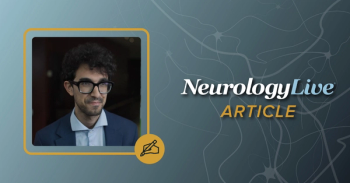
The Approval of Fenfluramine for Treating Dravet Syndrome
Two experts explain the impact of the drug fenfluramine’s FDA approval in the treatment of Dravet syndrome.
Episodes in this series

Elizabeth Thiele, MD, PhD: I know you’ve been involved in the whole process of the development of fenfluramine. What’s your take, both the experience with it before the clinical trials as well as what’s perceived about how it works?
Elaine C. Wirrell, MD: How does it work? It does increase serotonin levels in the brain, but it does something else, because the other serotonergic agents—we tried other serotonergic agents prior to fenfluramine getting kicked off, and they didn’t work as well as fenfluramine. It’s not the serotonin. There’s work showing that it also acts on the sigma 1 receptors. Exactly how that impacts seizures, I don’t understand. I don’t think anybody understands. But I do think there’s got to be something more than just the serotonin.
Elizabeth Thiele, MD, PhD: I agree. The story of its development is really interesting.
Elaine C. Wirrell, MD: Yes.
Elizabeth Thiele, MD, PhD: I wish I could ask Jean Aicardi why he started using fenfluramine to treat epilepsy many years ago. It’s an incredible story. With both CBD [cannabidiol] and fenfluramine, the story of the development is unusual and different from any of our other medications. CBD was largely driven by the patient community, which is amazing. It’s similar to the resurgence of the ketogenic diet in the 1990s. What’s your understanding of what led to us doing trials with fenfluramine?
Elaine C. Wirrell, MD: Many of these children will have self-induced seizures—hand waving—that are inducing photic-type seizures. If they could use a serotonergic agent, that would target some of these obsessive-like behaviors that led to their seizures being induced. They did see a significant reduction in that proportion of patients. That was before Dravet syndrome was recognized with the SCN1A variant. Once it was recognized that Dravet was related to the SCN1A variant, they went back and tested these children while a lot of them had Dravet syndrome. They thought, “Wow. This is something that’s really interesting.” At that time, fenfluramine had been used previously in the United States, and in combination with phentermine—much higher doses in persons with obesity—and was pulled off the market because of concerns of pulmonary hypertension and cardiac LDL [low-density lipoprotein] apathy. The Belgians managed to go to the king and get a royal decree to allow this therapy to still be used in persons with Dravet syndrome. They were the ones that published, in 2012, the paper that we all were wowed by: patients with Dravet syndrome who could go a year seizure-free. That was very exciting. That led to then the development of the clinical trials.
Elizabeth Thiele, MD, PhD: I tell the story when I describe this medication to residents, medical students, and patients. It was the patient community—the concept of going to the king and getting a royal decree to be able to stay on the medication. That gave us not only efficacy in a subset of patients with Dravet but also long-term safety and tolerability. Granted, it was with a very small end, but for a couple of decades, these patients tolerated it and continued to do well.
Then the trials began. Those were exciting trials to be part of—big for patients with Dravet. You and I love working with that patient community. We’re very strong advocates for patients living with Dravet. There are 2 trials for Dravet and 1 trial for LGS [Lennox-Gastaut syndrome]. We have FDA approval for Dravet syndrome but not for LGS. What was your experience with those trials?
Elaine C. Wirrell, MD: There were 2 clinical trials. The first was done on persons who were not on stiripentol, because it was known that there was a pharmacokinetic interaction with stiripentol. That first trial was a game changer. They had 120 children between 2 and 18 years old treated with fenfluramine. They looked at placebo; at a low dose, 0.2 mg/kg; and a higher dose, 0.7 mg/kg per day. Those are still relatively low doses when you look at the doses that were used previously for obesity. The concern was that they had to monitor cardiac adverse effects very carefully, but those clinical trials showed that there were no cardiac adverse effects that we’re seeing. This was very reassuring. These children were getting regular echocardiograms. But the trials also showed that if you’re looking at a 50% reduction of seizures, it was 68% on the high dose, 38% on the low dose, and 12% on placebo.
When they looked at higher bars—and that’s what I liked about this study is—they said, “Well, 50% is great. Let’s look at 75%.” In 75%, they still had half the children on the high dose get a 75% or greater reduction in seizures. In fact, in the high-dose group, nearly a quarter of those children went from having at least 1 convulsive seizure a week to having no more than 1 seizure over the clinical trial. It was either completely seizure-free or 1 seizure. This set a new bar for what we might expect from a therapy for Dravet syndrome.
The second trial only looked at children on stiripentol. They chose the dose to be equivalent to the higher dose in the first trial, which was a lower dose because stiripentol does increase levels of fenfluramine. That study also was a positive study. They had about 54% vs 5% achieving a greater than 50% reduction. When they looked at a 75% reduction, they still got a third of the children on the treatment achieving a 75% reduction. That’s not as robust as the group that’s not on stiripentol. They did better. But for the group on stiripentol, that was a significant benefit.
Elizabeth Thiele, MD, PhD: We participate in the CBD trials and then the fenfluramine trial. For the CBD trial, it was easy to enroll patients with that because it was CBD. We almost had people downplaying it down the street. When the fenfluramine trial started, it was more reserved. A lot of the patients engaged in the Dravet Syndrome Foundation were in, because they knew from the Belgium experience, from the animal model experience. When people in the Belgium experience came out, some people questioned, “How could it be that good?” Many of us were excited when the trial results were that positive. They now have the largest pediatric echocardiogram data set. This shows that, with time, you can have a little trace. You get valve regurgitation. It then goes away the next time. It was not pathologic. We know a lot about the safety and tolerability of fenfluramine in this patient population.
This transcript has been edited for clarity.
Newsletter
Keep your finger on the pulse of neurology—subscribe to NeurologyLive for expert interviews, new data, and breakthrough treatment updates.




























